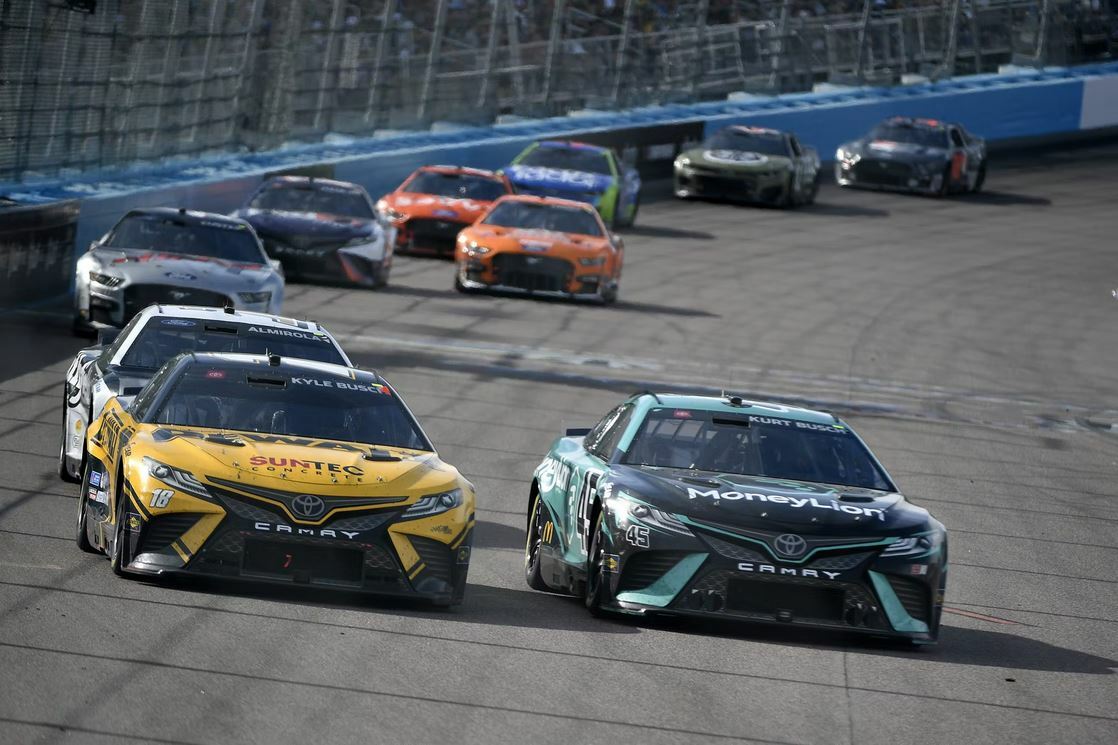NASCAR Cup Series
How Bad Do You Want It: How Chastain Made Trackhouse a Winner
Mar 28, 2022
The sample size is small, and it very well could change within a month, but the Next Gen appears to have already started to change the face of the NASCAR Cup Series as we knew it.
For the second time in three weeks, the finish to a race featured Ross Chastain, Chase Briscoe and Tyler Reddick, and it’s a trend that should continue for several weeks longer. After all, Daniel Suarez has also looked like a legitimate contender and drives the same Trackhouse cars as Chastain.
But honestly, everyone has the same equipment now, and that was the entire point of moving to a de facto spec platform in the first place. Motorsports will always come down to personnel on the engineering front, but early on, it’s probably fair to suggest that driver flexibility and versatility might be playing a factor in the results as well.

Because, you know who hasn’t been a factor every week?
Kevin Harvick
Denny Hamlin
Brad Keselowski
Kyle Busch
These traditional superstars are likely to get theirs before the end of the season, and very well could be amongst the championship finalists come November, but this isn’t the Gen-6 anymore and this new car is unlike anything that has come before it.
Further, outside of Busch and the occasional Super Late Model appearance and his Rolex 24 start in 2020, these drivers pretty much stick to the Cup Series. They don’t engage in a lot of extracurricular racing.
In that sense, it’s not a surprise that drivers who have no preconceived notion of what a Cup Series car is supposed to drive like is having the most success. There is no muscle memory to rewire, something Hamlin specifically has talked about regarding his early challenges on pit road and on track.
Busch had led laps and has been the fastest of the four mentioned above. He’s also been the recipient of some really bad luck, but also acknowledges that the fresh faces are simply executing better than everyone else right now.
"They are doing a good job," Busch said. "They are getting the job done when it matters most -- and that’s the last lap, taking home the checkered flag."

Briscoe specifically thinks drivers with dirt backgrounds are having the most success but not for the reasons you might think.
"Ross isn’t a dirt guy, but a lot of the dirt guys, when we go to a racetrack, you get three laps, three hot laps and you better figure it out quickly.
"I think this car, being new, not a lot of practice, the dirt guys have always had to figure things out quickly. The guys that grew up in pavement Late Models, they don’t necessarily have that. They go and test and run hours of practice. The dirt guys, you got to figure it out quickly and adapt."
Briscoe says that's not a slight on the old guard, as it were, but the new generation doesn't have anything to unlearn.
"I don’t think we’re better race car drivers or better teams, but I do think it’s an equalizer to a certain extent because it’s a new opportunity and guys to have figure it out and adapt," he says.
To his point, Austin Cindric has led laps and run up front, and was part of the same Ford Performance development program with Briscoe that had them splitting time in both NASCAR and IMSA. Cindric also has open-wheel single-seater experience.
Briscoe, of course, grew up racing Sprint Cars before transitioning to Stock Cars.
While Chastain is just a pavement racer, there has to be something to be said about his decade of driving in all three divisions every weekend -- serving as something akin to NASCAR’s ironman before being hired by Chip Ganassi Racing.
Reddick was a winner in Lucas Oil Dirt Late Models before moving to NASCAR’s top three divisions. He has never driven the same type of car or truck for more than two or three years in a row. Moving from the Gen 6 to the Next Gen after two years was just an extension of the status quo.

At the same time, Chase Elliott, Ryan Blaney and Joey Logano are the championship leaders, and they're not exactly the new guard, but they aren't as entrenched as some of the true veterans either.
They also are with teams that have largely shown some degree of early success with the new car in Chevrolet's Hendrick Motorsports and Ford's Team Penske. It's also probably fair to say that Toyota has the most work to do through the first six races.
Regardless, this new frontier has proven to shake up the status quo. That doesn't mean the Cup Series can't end up with a 'Big Three' by the start of the playoffs or another 10-race winner like Kyle Larson last year, but the playing field has been leveled as intended.
And while engineering will always find a way in motorsports, drivers with the most open mind and the least to unlearn seem to have the early advantage in 2022.